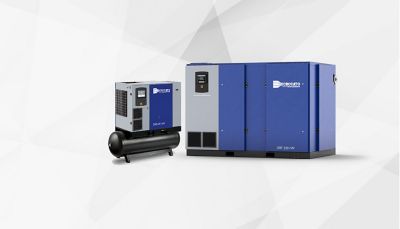When ambient air is compressed, the humidity it contains turns into moisture, which can cause damage to your compressed air system. Removing this moisture is essential to protect your equipment and maintain productivity. One effective solution is installing a desiccant air dryer, which dries compressed air and ensures your operations run smoothly.
In this guide, we’ll explore what a desiccant air dryer is, how it works, and where it’s commonly used.
What is a air compressor Desiccant Dryer?
A desiccant dryer, also known as an adsorption dryer, is a device that removes moisture from compressed air using desiccant material. This material absorbs moisture from the air, making it ideal for environments where very dry air is critical.
Desiccant air dryers are commonly used in applications like laboratories, spray painting, printing, and any application where even minimal moisture can affect results or product quality.
Types of Desiccant Materials
Desiccant dryers use various types of desiccant material that differ in performance depending on the requirements dew point. We utilise the following desiccant materials:
Activated Alumina: A highly porous material with excellent moisture adsorption capacity and durability. It performs best at a Pressure Dew Point (PDP) of -40°C or higher.
Silica Gel: Known for its high adsorption ability, silica gel is best used in environments with a PDP between -40° and -60°C. It can absorb up to 40% of its own weight in moisture, although it has lower mechanical strength.
Molecular Sieves: These synthetic desiccants have uniform pores to selectively adsorb specific molecules. They are ideal for applications requiring extremely low dew points (around -70°C) and perform well even when air temperatures reach 40-50°C.
All three types of desiccant material are chemically inert, maintain their structure, and can last up to five years under continuous use.
 A desiccant dryer, or an adsorption dryer, removes moisture from compressed air through desiccant material.
A desiccant dryer, or an adsorption dryer, removes moisture from compressed air through desiccant material.
How does a Desiccant Dryer Work?
A desiccant air dryer typically involves two towers filled with desiccant material. Adsorption dryers attract and hold the moisture using the desiccant material.
Compressed air flows into one tower, where moisture is removed. While one tower is drying the air, the other regenerates by removing the adsorbed moisture from the desiccant. The system automatically alternates between the two towers to provide a continuous flow of dry air.
Applications of an Air compressor Desiccant Dryer
Various industries use an air compressor desiccant dryer to ensure the quality of their compressed air. Common applications of desiccant dryers include:
- Pharma industry: Maintaining sterile environments and preventing contaminants.
- Food and Beverage: Ensuring product integrity and shelf life.
- Automotive: Enhancing the performance of pneumatic tools and equipment.
- Electronics: Preventing moisture-related damage to sensitive components.
Maintenance and Lifespan of Desiccant Dryers
The lifespan of desiccant dryers depends on the type of dryer, the application, and the quality of maintenance. For example:
- Activated alumina can last up to five years in heatless dryers, but only 2-3 years in heat-regenerated systems.
- Regular inspections and desiccant replacement are critical for system performance.
- Use pressure drop measurements, moisture analysis, and visual checks to monitor desiccant effectiveness.
Choosing the Right Desiccant Dryer
When selecting a desiccant dryer, consider your required dew point and air demand:
- Heatless desiccant dryers are suited for low demand compressed air systems.
- Heated and blower purge dryers are better for high-demand systems or where extremely dry air is needed.
Consulting with an expert is a good idea to ensure proper selection. Our experts will go through all your needs to ensure the most appropriate solution.
Common Questions About Desiccant Dryers
How long does desiccant last in a dryer?
The lifespan of desiccant material will vary depending on the type of dryer, application and maintenance level. An example of this is the activated alumina desiccant. This can last up to five years in heatless dryers with proper maintenance but only lasts two to three years in heat-regenerated dryers.
How often should desiccant be replaced in a dryer?
The frequency of replacing the desiccant material varies according to the dryers usage and the ambient humidity. Regular inspections can help to understand when changing the desiccant material.
What affects the lifespan of desiccant?
Factors affecting the lifespan of a desiccant include air quality, system efficiency, operating conditions, and the desiccant material used.
How can I monitor desiccant performance?
Use methods like pressure drop measurements, moisture content analysis, and visual inspections to ensure effective operation.
Where can I find maintenance guidelines?
Always refer to your dryer’s product documentation or consult the manufacturer for specific care instructions.
Get in touch with an expert
A desiccant dryer is a smart investment for any operation that relies on clean, dry compressed air. With the right system and regular maintenance, you’ll protect your equipment, maintain quality, and keep production efficient.
Contact an expert today to learn more about choosing the right desiccant air dryer and maintaining its performance.






